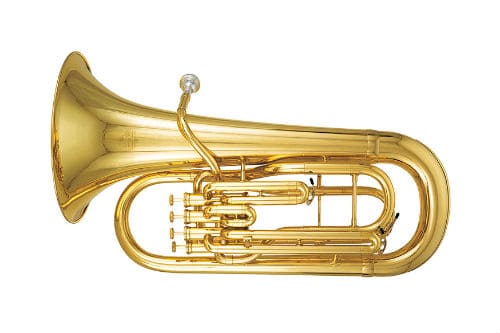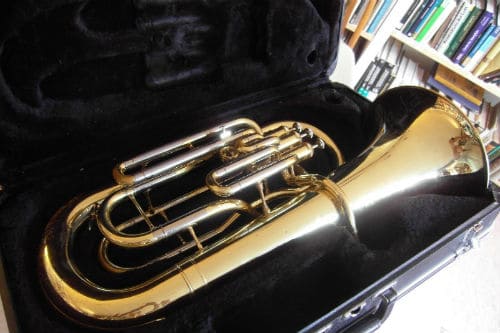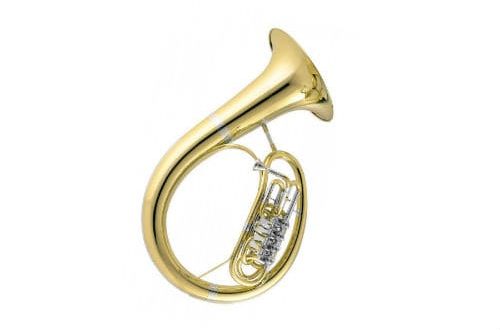
Euphonium: description of the instrument, composition, history, application
In the saxhorn family, the euphonium occupies a special place, is popular and has the right to solo sound. Like the cello in string orchestras, he is assigned tenor parts in military and wind instruments. Jazzmen also fell in love with the brass wind instrument, and it is also used in symphonic musical groups.
Description of the tool
The modern euphonium is a semi-conical bell with a curved oval tube. It is equipped with three piston valves. Some models have another quarter valve, which is installed on the floor of the left hand or under the little finger of the right hand. This addition appeared to improve passage transitions, make intonation more pure, expressive.

Valves are installed from above or in front. With their help, the length of the air column is regulated. Early models had more valves (up to 6). The euphonium bell has a diameter of 310 mm. It can be directed upward or forward towards the location of the listeners. The base of the instrument has a mouthpiece through which air is blown out. The barrel of the euphonium is thicker than that of the baritone, and therefore the timbre is more powerful.
Difference from wind baritone
The main difference between the tools is the size of the barrel. Accordingly, there is a difference between the structures. The baritone is tuned in B-flat. Its sound does not have such strength, power, brightness as that of the euphonium. The tenor tuba of different tunings introduces disagreements and confusion into the overall sound of the orchestra. But both instruments have the right to independent existence, therefore, in the modern world, when designing a tenor tuba, the strengths of both representatives of the brass group are taken into account.
In the English school of music, the middle baritone is often used as a separate instrument. And American musicians have made “brothers” interchangeable in the orchestra.
History
“Euphonia” from the Greek language is translated as “pure sound”. Like most other wind musical instruments, the ephonium has a “progenitor”. This is a serpent – a curved serpentine pipe, which at different times was made from copper and silver alloys, as well as from wood. On the basis of the “serpentine”, the French master Elary created an ophicleid. Military bands in Europe began to actively use it, noting the powerful and accurate sound. But the difference in tunings between different models required virtuoso skill and impeccable hearing.

In the middle of the XNUMXth century, the sound of the instrument was improved by expanding the scale, and the invention of pump valve mechanisms made a real revolution in the world of brass band music. Adolphe Sax invented and patented several bass tubas. They very quickly spread throughout Europe and became a single group. Despite minor differences, all members of the family had the same range.
Using
The use of euphonium is varied. The first creator of works for him was Amilcare Ponchielli. In the 70s of the XNUMXth century, he presented the world with a concerto of solo compositions. Most often, the euphonium is used in brass, military, symphony orchestras. It is not uncommon for him to participate in chamber ensembles. In a symphony orchestra, he is trusted with the part of a related tuba.
There have been cases of self-substitution by conductors who preferred the ephonium where the tuba parts were written in too high a register. This initiative was shown by Ernst von Schuch at the premiere of Strauss’ work, replacing the Wagner tuba.
The most interesting and weighty bass musical instrument in brass bands. Here, the euphonium performs not only an accompanying role, but often sounds solo. He is gaining great popularity in jazz sound.





